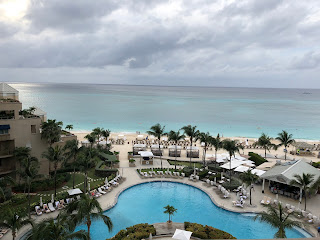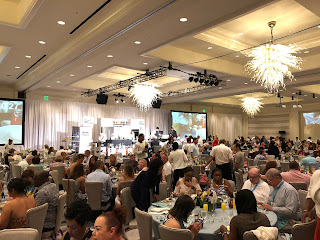TED 2018, day 5: One last session
We gathered for a last time this year in the TED theater for a morning session they called, "What matters." It's a wistful time at TED, because you're both exhausted and overflowing with ideas and feelings, and also want to keep enjoying the beautiful experiences they've created for you.
First up was some music from A Tribe Called Red, a DJ group that mixes urban and indigenous music and forms. I enjoyed it well enough, but I am not likely to be the main audience for anything near house music.
Famous venture capitalist John Doerr then talked about the management technique he learned from Andy Grove and swears by: OKR, short for objectives and key results. His enthusiasm for and belief in this system was strong and clear, and he argued persuasively that everyone should use it. I see value in it, but I don't consider it the only answer or a perfect approach.
Gary Liu, a former tech person who now is CEO of the South China Morning Post, basically told us how big China's internet business is and how it's coming for us all. The stats certainly are compelling. If you want to get a good sense of just how large China's online world is, check out this talk.
TED's Chris Anderson then interviewed Netflix CEO and philanthropist Reed Hastings. Their talk unearthed very little new information, though Hastings' exact answers were at times interesting. The funniest moment came when Anderson pointed out that Hastings was a billionaire, to which Hastings silently nodded assent, and that Hastings had donated hundreds of millions of dollars to education charities, to which Hastings again nodded assent, and then asked Hastings how many hundreds of millions he had donated. Hastings' answer was that he didn't exactly know. Wow.
After a quick break, architect and designer Walter Hood talked about his work in creating urban spaces that serve social causes as well as being functional. I look forward to seeing some of his work.
Mark Pollock and Simone George then took the stage in what was one of the most emotional talks of the week. A couple, they met when he was blind and an athlete, and a while later, he broke his back and became paralyzed from the waist down. They discussed their ongoing struggles with his challenges and all they had done to help push for cures for paralysis. Their efforts and their love touched everyone.
Designer Ingrid Fetell Lee talked about how design affects joy and the kinds of designs that elicit joy, as well as the difference between joy and happiness. Her presentation started slow but picked up speed and interest.
In the final talk of the show, comedian Baratunde Thurston did a wonderful job of both wrapping it all up and poking fun at everyone and everything related to this year's TED. We laughed a great deal, and then we headed upstairs for the indoor picnic and final meal of TED 2018.
Most people I talked with during that meal were both ready to be home and eager for next year's conference.
I feel the same.





















































